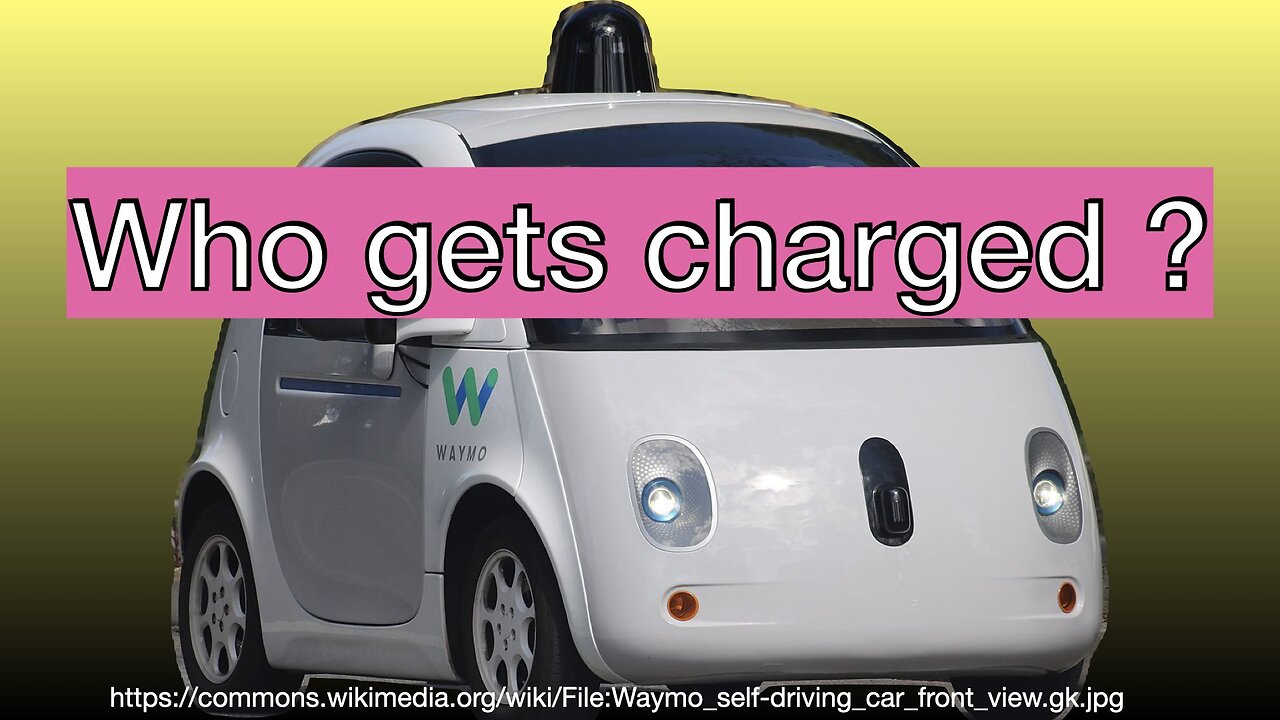Premium Only Content

Who’s Guilty When a Driverless Car Crashes? China’s Dynamic Liability Theory
When a self-driving car causes an accident, who should be held responsible? The human driver, the car manufacturer, the software company—or no one at all? This episode unpacks groundbreaking research from Chinese legal scholar Li Xinying on *“The Determination of Criminal Responsibility for Self-Driving Vehicles”*. The paper introduces a new model—**动态归责理论 (Dynamic Attribution Theory)**—which adjusts responsibility based on actual control power and duty of care.
We explore real case examples from China, the U.S., and beyond, explain why traditional strict liability and negligence models fail in autonomous contexts, and show how dynamic attribution could shape future laws.
If you’re interested in AI, technology, law, or the future of transportation, this deep dive is for you.
Time Codes
00:00 - Driverless Car Crashes
02:07 - Part 1: Background:
05:28 - Part 2: The Dilemmas of Responsibility
09:16 - Part 3: The Dynamic Attribution Theory
12:19 - Part 4: Practical Application and Future Lawmaking
14:36 - Closing
**Keywords (10–15):
* Autonomous vehicles 自动驾驶车辆
* Criminal liability 刑事责任
* Dynamic attribution theory 动态归责理论
* Driverless cars 无人驾驶汽车
* Legal responsibility 法律责任
* Algorithm black box 算法黑箱
* Product defect liability 产品缺陷责任
* Self-driving law 自动驾驶法律
* China legal reforms 中国法律改革
* Control power 控制力
* Duty of care 注意义务
* Future transport regulation 未来交通监管
-
 59:04
59:04
The Rubin Report
1 hour agoGavin Newsom Humiliates Himself on Colbert by Saying This Live On-Air
6.57K27 -
 LIVE
LIVE
The Shannon Joy Show
1 hour agoEpstein Enterprise Wobbling! Tom Massie Petition SUCCEEDS - Vote To Release ALL Files Imminent!
307 watching -
 LIVE
LIVE
The Mel K Show
58 minutes agoMel K & Jovan Hutton Pulitzer | For Reasons of National Security: The 2020 Election Audit Continues
447 watching -
 LIVE
LIVE
LFA TV
19 hours agoBREAKING NEWS ALL DAY! | THURSDAY 9/25/25
4,624 watching -
 LIVE
LIVE
Trumpet Daily
38 minutes agoTrumpet Daily LIVE | Sept. 25, 2025
412 watching -
 1:55:17
1:55:17
Benny Johnson
2 hours agoPANIC: James Comey Indictment IMMINENT, Faces PRISON | Letitia James, John Bolton Next, Trump CURSE
35.4K32 -
 1:00:18
1:00:18
VINCE
3 hours agoHow Many More Tragedies Before A Change Is Made? | Episode 133 - 09/25/25
238K97 -
 1:14:02
1:14:02
theoriginalmarkz
2 hours agoCoffee with MarkZ. 09/25/2025
10.3K2 -
 2:04:20
2:04:20
Badlands Media
8 hours agoBadlands Daily: September 25, 2025
36.9K19 -
 LIVE
LIVE
The Big Mig™
3 hours agoEpstein Was CIA & Who Is Trump Protecting?
6,080 watching